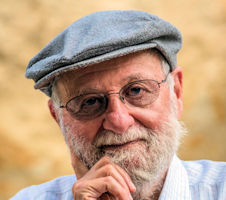The activities of Silicon Valley were using the stuff from my research laboratory. I was publishing article and books: they were changing the world. So I retired from UCSD (the first of my five retirements) and joined Apple, first as an “Apple Fellow” and then as Vice President of Advanced Technology. I learned about the constraints of cost, supply-chain management, sales, and customer expectations in developing products: having a great idea was the easiest part. While there, together with several hand-picked colleagues, we invented the term “User Experience (UX)” and started to define how UX fit into the design world. And I discovered real designers.
Eventually, I left Apple, started my own company (Nielsen Norman group), and then followed a client to Chicago for an educational startup that failed. So I joined Northwestern University in their computer science department. (See – I finally became a real Computer Scientist.)
I’ve lived a fascinating life. And when asked for my advice to students, my answer is simple: do not do what others expect you to do. Do what you want to do. Do what excites you. If you have a job doing things you are not excited by, you won’t do a good job. If you do what you enjoy, you will accomplish much. And having a feeling of enjoyment, excitement and the notion of contributing to the world’s greater good is worth far more than any salary could mean. If other people think that what you are doing is wrong, nonsensical, and worthless, this means you are on to something. All creative, world-changing ideas start off by being thought to be crazy. After all, if you are breaking new ground, other people will find it uncomfortable. But if you truly believe and are excited, have confidence. In my case, what I did was find those people around the world in the scientific community who agreed with me. So we formed teams of people, pushing forward these crazy, new ideas. Today, they are so well accepted that now they are called “old-fashioned.” If your ideas are so well accepted that they are considered old-fashioned, that is success. After all, the whole point of science and engineering is to continually be learning, advancing our understanding, moving forward. Expect successful ideas to be incorporated into thought patterns, but modified and changed along the way. Old fashioned? Yup, I will be the first to say so.
I make it a point to learn a new topic every year. And when people all pile into the area I had developed, I leave. I let the new people fill in the details while I work in some other, new, unexplored area. Some people keep working in the same area their entire lives. Both approaches are valid: You have to pick the strategy that fits you.
Along the way, I wrote a large number of books (it is over 20 today, translated into 20 languages). I was one of the founders of the field of Human-Computer Interaction (perversely abbreviated as CHI by the computer scientists), and to my great surprise started being called a designer.
Why design? Because design requires working across all the disciplines of the university tackling a wide variety of problems, from medical devices, to lung cancer, pandemics, and world hunger, education, and water. This makes it the most exciting field in the world. Design is a way of thinking, of using evidence, and of creating physical devices and procedures and strategies that change the world. Is it Computer Science? Cognitive Science? Engineering? In my opinion, it needs all these disciplines – and more. It also needs to understand the economy, business, political structurers, and the environment. Who cares what it is called if it has the capability to change the world in a positive way?
Pretty good for a computer scientist, eh? I’ve lived long enough to have accumulated a number of honors. Honorary degrees, membership in all sort of societies, including the National Academy of Engineering (in their computer science division), and now, most wonderful of all: hero. But what I am most proud of is the legacy I leave behind: my students and the hundreds of thousands of people I have inspired through my books.
My goal for computer scientists is that we should be designing systems that help empower people, that put people first, technology second, and that use technology to make life easier, more pleasant, and to dramatically enhance people’s capabilities. It’s not about the technology: It’s about the people.


